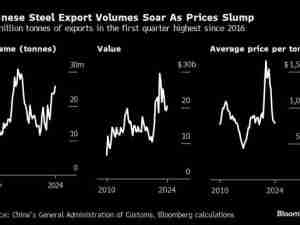Australian beef exports hit by sliding slaughter rate
By: Reuters | Dec 20 2015 at 04:57 PM | International Trade
For three years, Australian cattle abattoirs have worked around the clock slaughtering record numbers of animals to supply to the world market, breaking only for a few days over Christmas.
Now, some of the biggest plants have been idled with the national herd at its smallest in decades, heralding a sharp cut in sales by the world's third-biggest beef exporter to major buyers such as the United States, China and Japan.
While this will buoy global beef prices, as the United States rebuilds its own herd, it will also offer exporters such as Brazil and Argentina an opportunity to step up sales.
"This is a once-in-a-generation decline but unfortunately we can expect herd numbers to stay significantly low for at least the next two years as cattle producers rebuild," said Tom Maguire, general manager at meat exporter Teys Australia.
Teys, co-owned by Cargill, and the Australian unit of JBS SA, the world's top beef producer, have both temporarily idled their processing plants and cut working hours - evidence that supply is scarce.
Australian ranchers had been forced to cull at a blistering pace in recent years as a severe drought wilted pastures. The dry spell at its worst covered an area larger than the size of South Africa across Australia's main cattle belt in the east.
"There are a lot of people in Queensland who don't have any stock left," said Bim Struss, a farmer from the state, which is home to about half the national herd. "We are down to a five-year low for our breeding females."
Record Slaughter
Nearly 30 million animals were slaughtered over the past three years and estimates from Meat and Livestock Australia (MLA) show the national herd is at a 20-year low.
Cull numbers fell more than 16 percent year-on-year in November, according to the industry body.
Australia's Eastern Young Cattle Indicator reached a record high of A$5.97-3/4 ($4.28) a kilogram on Dec. 2 on supply fears.
The shortage will worsen if ongoing dryness linked to an El Nino weather pattern eases, reviving pastures and enabling farmers to focus on building herds.
"We are trying to be in a position for when the rains come so we are trying to keep as many young females as possible," farmer Struss said.
Australia has already cut its estimate for beef exports to 1.19 million tonnes for the year to July 2016, from its prior view of 1.225 million tonnes. Last year, it shipped a record 1.35 million tonnes.
"There is going to be a prolonged lull in exports, simply because the stocks are not going to be there, and it could take two, three years at least to rebuild stocks," said Phin Ziebell, agribusiness economist, National Australia Bank.
Brazilian Opening
Lower Australian beef supply could force its top customer the United States, as well as Japan and China, to look for shipments from countries such as Brazil and Argentina.
"If you look at Brazil, it has the potential to grow. It already has the largest cattle herd in the world and with the real depreciation, it can increase its global footprint," said Matt Costello, animal protein analyst at Rabobank.
Rabobank sees a 6 percent rise in Brazil's 2016 exports.
Brazil has already got permission to sell fresh beef to the United States - the first step in overcoming a 14-year ban on shipments by the U.S. following outbreaks of foot-and-mouth disease in the Latin American country.
"We know there is a growing demand in Asia ... Australia won't be able to meet all this demand," said Antonio Camardelli, President of Brazil's beef export association, Abiec.
"Australia and the U.S. are who export the most there. But the United States, the more it exports the more it needs to import. Brazil can benefit from all of this."

